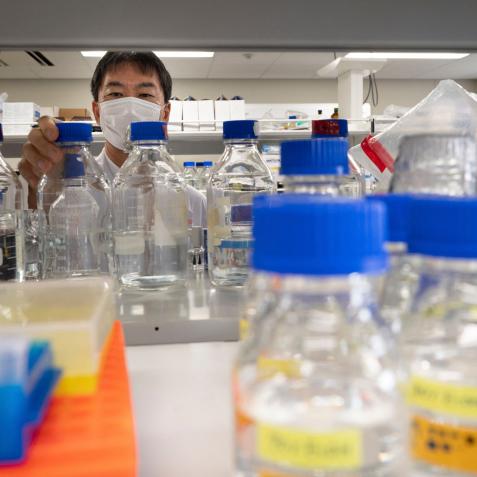
Eric Yang
Carbon Conversion Turns Dangerous Greenhouse Gas into Fuel
Carbon dioxide (CO2) emissions are a grave environmental problem. This persistent greenhouse gas produced by fossil fuels is relentlessly warming Earth’s climate. Technologies to reduce its levels and climate impact concern us all. So can breakthroughs that use CO2 to create new fuels help solve the problem? Potentially, yes.
SpaceX founder Elon Musk has plans to make carbon-based fuel the basis of his space program. In December 2021, he announced plans to remove excess CO2 from the atmosphere and turn it into rocket propellant. Musk expects CO2 to drive space exploration and cool Earth’s climate at the same time.
Analysts say splitting CO2 into hydrocarbons using catalysts and electricity can be a low emissions route to produce fuel, such as kerosene or ethanol, but how the electricity is generated matters. Fossil fuel energy generation through coal, gas, or oil increases CO2 emissions, so low carbon renewables like solar, wind, or wave and tidal power, plus nuclear energy, are a necessity.
CO2 is now peaking at almost 420 parts per million in Earth’s atmosphere. The last time its concentration was so high was three million years ago when the global temperature was 2–3C (3.6–5.4F) warmer and sea levels 15-25 meters (50-80 feet) higher. Increasing CO2 emissions simply adds to the crisis.

Jaromir Chalabala / EyeEm
CO2 can be used to produce materials used in refined rocket propellants.
Low carbon electrocatalysis of CO2 to produce kerosene used in refined rocket propellants like RP-1 and other fuels could help to re-balance the carbon cycle. Carbon captured from the air or industrial processes can be recycled to make its impact more neutral.
The US Department of Energy is now working on renewable carbon conversion schemes. One project with Stanford University has created a nickel catalyst that works with either heat or electricity to transform CO2 into chemicals, fuels, and other products. If done on a large scale, researchers say it could create financial incentives to kickstart the entire CO2 recycling industry.
Another with Northern Illinois University converts CO2 emitted from industrial plants into ethanol using electricity and a copper-carbon catalyst. Gas captured from industrial emissions creates a more circular carbon economy through re-use, say, chemists.
Yet another project at Berkeley is being seeded by the government’s Liquid Sunlight Alliance for renewable carbon conversion. But despite these breakthroughs, scientists have experienced difficulties in scaling up manufacturing, with low CO2 conversion rates making the process highly inefficient. Researchers at MIT think pulsing the electrical current could solve the problem, but more testing is needed to find the most effective solution.
Promising British carbon conversion firm Air Fuel Synthesis thought it had perfected the process in 2012. Backed by senior engineers and academics, it hoped to build a commercial-scale plant producing one ton of petroleum a day within two years of launch. Instead, its vision stalled and the company eventually folded in 2018.
New projects promising to create carbon-based liquid fuels from water and renewables have become a popular theme. Swiss and Norwegian researchers are building floating solar photovoltaic islands that power CO2 and hydrogen extraction from seawater. The gases are then combined to form methanol.
Scientists in the UK and China are separately investigating technologies to produce pure formic acid fuel from CO2 and water. The British approach is a unique wireless photosynthesis plate using sunlight to create formic acid that can also be converted into the zero-carbon fuel, hydrogen.

zhihao
Mountain solar power station
On a larger industrial scale, the pan-European PyroCO2 project is building a facility to capture 10,000 metric tons of industrial CO2 per year – equivalent to emissions from 2,200 cars – for conversion to useful chemicals using renewable energy.
US energy secretary Jennifer Granholm has promised heavy investment in carbon capture from the atmosphere, with the aim of pushing prices down from developmental costs of $2,200 per ton of CO2 to around $100 per ton by 2030.
It will be expensive and difficult to do – the world’s current largest direct air capture plant only removes 4,000 metric tons of CO2 per year, and the United Nations says around 100 billion to one trillion metric tons must be removed by the end of the century to compensate for human emissions.
Whether turning CO2 pollutants into products becomes a coherent industry will depend on scientists perfecting the process. But carbon capture fuels could eventually be as easy to create as consumer products like vodka or sunglasses. These are early days and optimism, at least, is high.


















